Milk
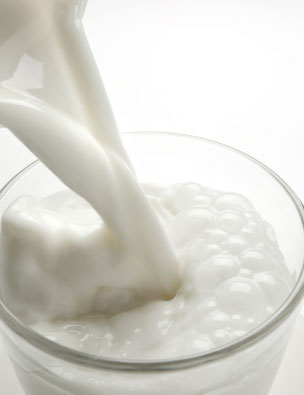
Did you ever see those lovely big tanker trucks that tell you that ‘Milk is Beautiful’? Well each of them contains milk from hundreds of cows, all in together! If even one of those cows is sick, all of the milk will have the germs. Oh yes, more good news still—it is almost impossible to find a totally healthy dairy cow.
Why No Milk
- During pasteurization all valuable enzymes are destroyed (lactase for the assimilation of lactose; galactase for the assimilation of galactose; phosphatase for the assimilation of calcium).
- Even after pasteurization, milk is very high in bacteria count – 100,00 bacteria in teaspoon.
- Milk contains antibiotics and animal drugs.
- Milk is a liquid meat and contains lot of pus.
- Dairy Products contains high protein Content and promote calcium loss and leads to osteoporosis.
- Milk and Dairy products contains high amount of Trans fat may cause heart disease.
- Casein, which comprises 80% of the protein in cow's milk, promotes cancer in all stages of its development.
Calcium
The calcium in cow's milk is basically useless because it has insufficient magnesium content (those nations with the highest amount of milk/dairy consumption also have the highest rates of osteoporosis.Calcium? Where do the COWS get calcium for their big bones? Yes... from plants! The calcium they consume from plants has a large amount of magnesium... necessary for the body to absorb and USE the calcium.
Allergies
A teenage boy in hospital with muscular and skeletal pains, bronchial asthma, abdominal pains, headache and dark circles under the eyes experienced substantial improvement within two days when milk and chocolate were taken out of the diet. When milk was given to him again after three weeks, the… symptoms returned.
– E G Weinberg and M Tuchinda, “Allegic Tension Fatigue Syndrome”
Annals of Allergy, 31:209-11, 1973
Cited in Let Food Be Thy Medicine, by Alex jack
Annals of Allergy, 31:209-11, 1973
Cited in Let Food Be Thy Medicine, by Alex jack
Anemia
Young children sometimes become aanemic due to significant iron loss from intestinal bleeding. Studies show that over half the intestinal bleeding in children is a reaction to dairy products. Many studies have measured the haemoglobin (iron) levels of people with different diet-styles. Vegetarians consistently fare better in these tests than do meat eaters. The only people who run into trouble are the ones who eat a lot of dairy products, fatty foods, sugar and junk foods.
– Wilson J, Journal of Paediatrics, 1974, 84:335, 1974
Cited in Diet for a New America by John Robbins
Cited in Diet for a New America by John Robbins
Arthritis
A 38-year-old woman had, for 11 years, been suffering from steadily worsening rheumatoid arthritis. Three weeks after doctors removed all dairy products from her diet, she showed signs of improvement. In four months, her arthritic symptoms had completely disappeared.
In the interest of scientific curiosity, she once again ate some cheese and milk. The next day, her joints were swollen, stiff and painful. Her symptoms again disappeared as she resumed her abstinence from dairy products.
– Parke, A, “Rheumatoid Arthritis and Food…”
British Medical Journal, 282:2027, 1981
Cited in Diet for a New America, by John Robbins
British Medical Journal, 282:2027, 1981
Cited in Diet for a New America, by John Robbins
Asthma
Twenty five patients with bronchial asthma were put on a strict vegetarian diet and showed 71 percent improvement within four months and 92 percent improvement within one year. The experimental diet avoided meat, dairy food, eggs and fish, as well as sugar, chocolate, salt and other foods.
– O Lindahl, et al, “Vegan Diet Regimen with Reduced Medication in the Treatment of Cronchial Asthma”,
Journal of Asthma, 22:45-55, 1985
Cited in Let Food Be Thy Medicine, by Alex Jack
Journal of Asthma, 22:45-55, 1985
Cited in Let Food Be Thy Medicine, by Alex Jack
Cancer
A 16-nation study, based on World Health Organisation Statistics, found a high correlation between consumption of animal protein, particularly from beef and dairy products, and lymphoma mortality.
The study indicated that beef and dairy food increased the risk of lymphosarcoma and Hodgkin’s disease by 70 and 61 percent respectively, while cereal grains lowered the risk by 46 and 38 percent.
Harvard University researchers asked hundreds of women with ovarian cancer to record in detail what they normally ate. There was one thing that they had eaten much more frequently than women without cancer: dairy products, especially the supposedly “healthy” products such as yoghurt.
The problem is the milk sugar, not the milk fat, so it id not solved by using nonfat products.
– A S Cunningham, “ Lymphomas and animal protein consumption,” Lancet, 2:1184-86, 1976
Cited in The Cancer Prevention Diet, by Michio Kushi
Cited in The Cancer Prevention Diet, by Michio Kushi
Cataracts
Populations that consume large amounts of milk and dairy products have a much higher incidence of cataracts.
The problem appears to be the milk sugar, lactose. In the digestive tract, lactose breaks apart, yielding two simple sugar molecules, glucose and galactose. When blood concentration of galactose increase, it can pass into the lens of the eye. There, galactose degrades into various molecular waste products that can lead to opacities of the lens.
Nursing children can generally handle galactose... As we age, many of us lose much of the capacity to break down galactose. There are even some rare cases of genetic defects in which children cannot break down galactose. These children can form cataracts within the first year of life.
– Couet C, jan P Derby G, “Lctose and cataract in Humans: a review”, Journal of the American
College of Nutrients, 10(1):79-86, 1991
Cited in Food for Life, by Dr Neal Barnard
College of Nutrients, 10(1):79-86, 1991
Cited in Food for Life, by Dr Neal Barnard
Crime and delinquency
Excessive milk consumption is connected with juvenile delinquency. Researchers at the University of Washington found that male offenders consumed an average of 64 ounces of milk a day, while the control group rank an average of 30 ounces. For girls, the figures were 35 and 17 ounces.
“In some situations,” they reported, “eliminating milk from the diet can result in dramatic improvements in behaviors, especially in hyperactive children.”
– Alexander Schauss, Diet, Crime and Deliquency
Diabetes in children
Cow's milk protein can enter the infant's blood stream and stimulate the formation of antibodies which, in turn, destroy the insulin-producing pancreatic cells. Diabetes becomes apparent when 80 – 90 percent of the insulin-producing beta cells are destroyed.
Researchers found high levels of antibodies to a specific portion of cow’s milk protein… in every one of 142 diabetic children they studied. Cow’s milk protein can even much reach a breast-feeding baby if the mother drinks milk.
– Scott F W, “Cow milk and insulin-dependent diabetes melitus…”
American Journal of Clinical Nutrition 50:728-30. 1989
Cited in Food for Life, by Dr Neal Barnard
American Journal of Clinical Nutrition 50:728-30. 1989
Cited in Food for Life, by Dr Neal Barnard
Multiple sclerosis
Children who are fed cow's milk formula grow up into adults with a higher susceptibility to multiple sclerosis than children who are breast-fed.
Cow’s milk contains only one fifth of the linoleic acid of human milk, and skimmed cow’s milk is utterly void of this important nutrient. Linoleic acid is essential for human nervous systems, which is where multiple sclerosis strikes.
– Agranoff, B. “Diet and the Grographical Distribution of Multiple Sclerorosis,” Lancet, 2:1061, 1974
Cited in Diet for a New America, by John Robbin
Cited in Diet for a New America, by John Robbin
Osteoporosis
Pobably most surprising of all, milk has been found to contribute to osteoporosis – the very disease that it is supposed to help prevent!
Even those studies by the National Dairy Council for the express purpose of showing the benefits of milk for women susceptible to osteoporosis have, in fact, ended up showing something quite different.
In one Dairy Council sponsored study, women who drank an extra three 8-ounce glasses of low fat milk everyday for a year showed no significant increase in calcium balance. They were still in negative calcium balance after a full year of the regime.
The scientists who conducted the test said the women continued to develop osteoporosis due to “…the average 30 percent increase in protein intake during milk supplementation.
– Recker R, “The Effects of Milk Supplementation on Calcium Metabolism, Bone Metabolism and Calcium Balance,” American Journal of Clinical Nutrition, 41:254, 1985
The calcium in kale and other green vegetables is more efficiently absorbed than the calcium in milk.
– Robert p Heaney and Connie M Weaver, “Calcium Absorption from Kale,”
American Journal of Clinical Nutrition, 51:656-57, 1990
American Journal of Clinical Nutrition, 51:656-57, 1990
Milk does contain calcium... but they are also high in protein and diets that are high inprotein, especially animal protein, cause more calcium to be excreted. Meats also contain large quantities of phosphorus, which can impair calcium balance.
– Hegsted R B, Barden H S, Zemel M B, Linkswiller H M,
“Urinary calcium and calcium balance in young men as affected by level of protein and phosphorus intake,”
Journal of Nutrition, 111:553-62, 1981
“Urinary calcium and calcium balance in young men as affected by level of protein and phosphorus intake,”
Journal of Nutrition, 111:553-62, 1981
Caffeine


Is Caffeine Truly Dangerous and Addictive?
- Coffee contains nitrosamines which are carcinogenic.
- The adrenal glands pump out stress hormones that stay elevated for up to 18 hours after consumption.
- It Increases high artificial adrenalin in blood.
- The liver releases higher amounts of sugar and fat into the blood stream.
- The pancreas produces insulin to remove the excess blood sugar and store it as fat.
- The insulin spikes create a blood sugar rollercoaster.
- Muscle tension is increased.
- The blood vessels constrict, reducing the flow of oxygen to important areas like your brain (up to 30%) and your extremities.
- Its one of the main cause of high blood pressure.
- Digestion and the immune system are impaired or suppressed.
- The production of DHEA and other anti-aging hormones is decreased. ( If You want to say young, avoid caffeine)
- Cortisol and other stress hormones are elevated.
- We lose Calcium and Magnesium by drinking caffeinated drinks
- It takes the body 24 hours to flush out the harmful effects of coffee (even 1 cup!), even though it contributes absolutely nothing to the total body chemistry.
- It is harmful to the liver, kidneys, heart, bladder, digestive tract, bones, teeth, skin, growing fetuses and newborns.
Addictiveness
When you drink caffeinated drinks like coffee, tea and most sodas, the caffeine in the drink causes increased neuron activity in the nervous system, which in turn results in release of adrenalin. That’s why caffeine gets us wide awake and alert as soon as it is sipped. As adrenal high wears off in the blood, you start to feel tired, irritated, confused and may experience a headache. This is usually results in reaching for another cup of coffee/tea/soda and the roller coaster ride starts over.
Caffeine Products
- 1 cup of Coffee has 40 to 150 milligrams of caffeine.
- 1 cup of Tea has 10 to 50 milligrams of caffeine. (Wikipedia)
- Most of the soft drinks contain at least 50 milligrams of caffeine.
- Energy drinks contains 70 to 400 grams of caffeine.
- Chocolate contains 5 to 10 milligrams of caffeine per ounce.
Fact about health benefits of Tea
Claims that tea is a good source of anti- oxidants are true. But there are plenty of other sources of anti-oxidants that do not have the harmful effects of tea.
What to do, to curb Caffeine Cravings?
Drink the following thing, when ever you get caffeine cravings.
- Drink lot of water and flush out toxins in your body.
- Switch to Cereal coffees, but not too hot.
- Herbal teas, but not too hot.
- Switch to soy milk, nut milk, seed and grain milk.
- Fresh juices made at home.
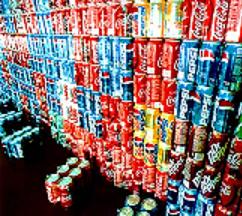
Why you should not drink Soft drinks & Energy Drinks
- Carbonated drinks are made by injecting carbon dioxide into the water under pressure.
- We all know that carbon dioxide is a waste product exhaled by human.
- Carbon dioxide kills healthy cells.
- It abuses Kidney.
- It Provides Zero Nutrients.
- It contains full of refined high sugar.
- Weakens the immune system.
- It Increases the Blood pH which is a flourishing environment for Bacteria and Virus
- Contains Caffeine, which is an additive drug, weakens the nervous system and increases the heart rate.
- Depletion of calcium from bone and tooth.
- One of the active ingredient is Coke is phosphoric acid. Its Ph is 2.8. It will dissolve a nail in about 4 days.
- The Preservatives and artificial flavoring chemicals may cause allergy, cancer, obesity, diabetes, tooth decay, osteoporosis, nutritional deficiencies, heart disease, and many neurological disorders.

Alternative to Refined sugar: Raw Sugar, Jaggery, Palm sugar, Honey, Fruits
125 Reasons Why Sugar Is Harmful !
In addition to throwing off the body's homeostasis, excess sugar may result in a number of other significant consequences. The following is a listing of some of sugar's metabolic consequences from a variety of medical journals and other scientific publications. The following data is from the book, Lick the Sugar Habit, by Nancy Appleton.
- Sugar can suppress the immune system
- Sugar upsets the mineral relationships in the body
- Sugar can cause hyperactivity, anxiety, difficulty concentrating, and crankiness in children
- Sugar can produce a significant rise in triglycerides
- Sugar contributes to the reduction of defense against bacterial infection (infectious diseases)
- Sugar causes a loss of tissue elasticity and function; the more sugar you eat the more elasticity and function you loose
- Sugar reduces high density lipoproteins
- Sugar leads to chromium deficiency
- Sugar leads to cancer of the breast, ovaries, prostrate, and rectum
- Sugar can increase fasting levels of glucose
- Sugar causes copper deficiency
- Sugar interferes with absorption of calcium and magnesium
- Sugar can weaken eyesight
- Sugar raises the level of neurotransmitters: dopamine. serotonin, and nor-epinephrine
- Sugar can cause hypoglycemia
- Sugar can produce an acidic digestive tract
- Sugar can cause a rapid rise of adrenaline levels in children
- Sugar malabsorption is frequent in patients with functional bowel disease
- Sugar can cause premature aging
- Sugar can lead to alcoholism
- Sugar can cause tooth decay
- Sugar contributes to obesity
- High intake of sugar increases the risk of Crohn s disease and ulcerative colitis
- Sugar can cause changes frequently found in a person with gastric or duodenal ulcers
- Sugar can cause arthritis
- Sugar can cause asthma
- Sugar greatly assists the uncontrolled growth of Candida Albicans (yeast infections)
- Sugar can cause gallstones
- Sugar can cause heart disease
- Sugar can cause appendicitis
- Sugar can cause multiple sclerosis
- Sugar can cause hemorrhoids
- Sugar can cause varicose veins
- Sugar can elevate glucose and insulin responses in oral contraceptive users
- Sugar can lead to periodontal disease
- Sugar can contribute to osteoporosis
- Sugar contributes to saliva acidity
- Sugar can cause a decrease in insulin sensitivity
- Sugar can lower the amount of vitamin E in the blood
- Sugar can decrease growth hormone 41 Sugar can increase cholesterol
- Sugar can increase the systolic blood pressure
- Sugar can cause drowsiness and decreased activity in children
- High sugar intake increases advanced glycation end products (AGEs)(Sugar bound non-enzymatically to protein)
- Sugar can interfere with the absorption of protein
- Sugar causes food allergies
- Sugar can contribute to diabetes
- Sugar can cause toxemia during pregnancy
- Sugar can contribute to eczema in children
- Sugar can cause cardiovascular disease
- Sugar can impair the structure of DNA
- Sugar can change the structure of protein
- Sugar can make our skin age by changing the structure of collagen
- Sugar can cause cataracts
- Sugar can cause emphysema
- Sugar can cause atherosclerosis
- Sugar can promote an elevation of low density lipoproteins (LDL)
- High sugar intake can impair the physiological homeostasis of many systems in the body
- Sugar lowers the enzymes' ability to function
- Sugar intake is higher in people with Parkinsons disease
- Sugar can cause a permanent altering of the way the proteins act in the body
- Sugar can increase the size of the liver, by making the liver cells divide
- Sugar can increase the amount of liver fat
- Sugar can increase kidney size and produce pathological changes in the kidney
- Sugar can damage the pancreas
- Sugar can increase the body's fluid retention
- Sugar is enemy # 1 of the bowel movement
- Sugar can cause myopia (nearsightedness)
- Sugar can compromise the lining of the capillaries
- Sugar can make the tendons more brittle
- Sugar can cause headaches, including migraine
- Sugar plays a role in pancreatic cancer in women
- Sugar can adversely affect school children's grades and cause learning disorders
- Sugar can cause an increase in delta, alpha, and theta brain waves
- Sugar can cause depression
- Sugar increases the risk of gastric cancer
- Sugar can cause dyspepsia (indigestion)
- Sugar can increase your risk of getting gout
- Sugar can increase the levels of glucose in an oral glucose tolerance test over the ingestion of complex carbohydrates
- Sugar can increase the insulin responses in humans consuming high-sugar diets compared to low-sugar diets
- Highly refined sugar diet reduces learning capacity
- Sugar can cause less effective functioning of two blood proteins, albumin, and lipoproteins, which may reduce the body's ability to handle fat and cholesterol
- Sugar can contribute to Alzheimer's disease
- Sugar can cause platelet adhesiveness 85 Sugar can cause hormonal imbalance; some hormones become underactive and others become overactive
- Sugar can lead to the formation of kidney stones
- Sugar can lead the hypothalamus to become highly sensitive to a large variety of stimuli
- Sugar can lead to dizziness
- Diets high in sugar can cause free radicals and oxidative stress
- High sucrose diets of subjects with peripheral vascular disease significantly increases platelet adhesion
- High sugar diet can lead to biliary tract cancer
- Sugar feeds cancer
- High sugar consumption of pregnant adolescents is associated with a twofold increased risk for delivering a small-for-gestational-age (SGA) infant
- High sugar consumption can lead to substantial decrease in gestation duration among adolescents
- Sugar slows food's travel time through the gastrointestinal tract
- Sugar increases the concentration of bile acids in stools and bacterial enzymes in the colon
- Sugar increases estradiol (the most potent form of naturally occurring estrogen) in men
- Sugar combines and destroys phosphatase, an enzyme, makes the process of digestion more difficult
- Sugar can be a risk factor of gallbladder cancer
- Sugar is an addictive substance
- Sugar can be intoxicating, similar to alcohol
- Sugar can exacerbate PMS
- Sugar given to premature babies can affect the amount of carbon dioxide they produce
- Increase in sugar intake can increase emotional instability
- The body changes sugar into 2 to 5 times more fat in the bloodstream than it does starch
- The rapid absorption of sugar promotes excessive food Intake in obese subject
- Sugar can worsen the symptoms of children with attention deficit hyperactivity disorder (ADHD)
- Sugar adversely affects urinary electrolyte composition
- Sugar can slow down the ability of the adrenal glands to function
- Sugar has the potential of inducing abnormal metabolic processes in a normal healthy individual and to promote chronic degenerative diseases
- I.Vs (intravenous feedings) of sugar water can cut off oxygen to the brain
- High sucrose intake could be an important risk factor in lung cance
- Sugar increases the risk of polio
- High sugar intake can cause epileptic seizures
- Sugar causes high blood pressure in obese people
- In Intensive Care Units: Limiting sugar saves lives
- Sugar may induce cell death
- Sugar may impair the physiological homeostasis of many systems in living organisms
- In juvenile rehabilitation camps, when children were put on a low sugar diet, there was a 44% drop in antisocial behavior
- Sugar can cause gastric cancer
- Sugar dehydrates newborns
- Sugar can cause gum disease
- Sugar increases the estradiol in young men
- Sugar can cause low birth weight babies
References
Sanchez, A., et al., Role of Sugars in Human Neutrophllic Phagocytasts, American Journal of Clinical Nutrition. Nov 1973;261:1180-1184. Bernstein, J., etal., Depression of Lymphocyte Transformation Following Oral Glucose Ingestion. American Journal of Clinical Nutrition. 1997;30:613.
Couzy, E, et al. "Nutritional Implications of the Interaction Minerals," Progressive Food and Nutrition Science 17;1933:65-87.
Goldman, J., et al., Behavioral Effects of Sucrose on Preschool Children. Journal of Abnormal Child Psychology 1986;14(4):565-577.
Scanto, S. and Yindkin, J. The Effect of Dietary Sucrose on Blood Lipids, Serum Insulin, Platelet Adhesiveness and Body Weight in Human Volunteers, Postgraduate Medicine Journal. 1969; 45:602-607.
Ringsdorf, W, Cheraskin, E. and Ramsay R Sucrose, Neutrophllic Phagocytosis and Resistance to Disease, Dental Survey. 1976;52(12):46-48.
Ceraml, A., Vlassara, H., and Brownlee, M. "Glucose and Aging." Scientific American. May 1987:90. Lee, A.T and Cerand, A. The Role of Glycation in Aging. Annals of the New York Academy of Science; 663:63-67.
Albrink, M. and Ullrich I. H. Interaction of Dietary Sucrose and Fiber on Serum Lipids in Healthy Young Men Fed High Carbohydrate Diets. American Journal of Clinical Nutrition. 1986;43:419-428. Pamplona, R., etal., Mechanisms of Glycation in Atherogenesis. Med Hypotheses. Mar 1993;40(3):174-81.
Kozlovsky A., et al., Effects of Diets High in Simple Sugars on Urinary Chromium Losses. Metabolism. June 1986;35:515518.
Takahashi, E., lbhoku University School of Medicine, Wholstic Health Digest. October 1982:41:00.
Kelsay, J., etal., Diets High In Glucose or Sucrose and Young Women. American Journal of Clinical Nutrition. 1974;27:926-936. Thomas, B.J., et al., Relation of Habitual Diet to Fasting Plasma Insulin Concentration and the Insulin Response to Oral Glucose, Human Nutrition Clinical Nutrition. 1983; 36C(l ):49-51.
Fields, M., et al., Effectof Copper Deficiency on Metabolism and Mortality in Rats Fbd Sucrose or Starch Diets, Journal of Clinical Nutrition. 1983;113:1335-1345.
Lemann, J. Evidence that Glucose Ingestion Inhibits Net Renal Tubular Reabsorption of Calcium and Magnesium. Journal of Clinical Nutrition. 1976;70:236-245.
Acta Ophthalmologima Scandinavica. Mar 2002;48;25. Tub. H. Ed. Sugar Weakens Eyesight, VM Newsletter; May 1986:06:00.
Sugar, White Flour Withdrawal Produces Chemical Response. The Addiction Letter. July 1992:04:00.
Dufty, William. Sugar Blues. (New York: Warner Books, 1975).
Jones, T W , et al., Enhanced Adrenomedullary Response and Increased Susceptibility to Neuroglygopenia: Mechanisms Underlying the Adverse Effect of Sugar Ingestion In Children. Journal of Pediatrics. Feb 1995;126:171-7.
Lee, A.T. and Ceraml A. The Role of Glycation in Aging. Annals of the New York Academy of Science. 1992;663:63-70.
Abrahamson. E. and Peget. A. Body, Mind and Sugar. (New York Avon, 1977. )
Glinsmann, W, Irausquin, H., and Youngmee, K. Evaluation of Health Aspects of Sugar Contained in Carbohydrate Sweeteners. FD.A. Report of Sugars Task Force. 1986:39:00 Makinen K.K., et al., A Descriptive Report of the Effects of a 16-month Xylitol Chewing-gum Programme Subsequent to a 40-month Sucrose Gum Programme. Caries Research. 1998; 32(2)107-12.
Keen, H., etal., Nutrient Intake, Adiposity, and Diabetes. British Medical Journal. 1989; 1:00 655-658
Persson PG., Ahlbom, A., and Hellers, G. Epidemiology. 1992;3:47-52.
Yudkin, J. New York: Sweet and Dangerous : Bantam Books : 1974:129
Darlington, L., Ramsey N.W and Mansfield, JR Placebo Controlled, Blind Study of Dietary Manipulation Therapy in Rheumatoid Arthritis, Lancet. Feb 1986; 8475 (1):236-238.
Powers, L. Sensitivity: You React to What You Eat- Los Angeles Times. (Feb. 12, 1985). Cheng, J., et al., Preliminary Clinical Study on the Correlation Between Allergic Rhinitis and Fbod Factors. Lin Chuang Er BI Yan Hou Ke Za Zhi Aug 2002;16(8):393-396.
Crook, WJ.. The Yeast Connection (TN: Professional Books, 1984).
Heaton. K. The Sweet Road to Gallstones. British Medical Journal. Apr 14, 1984; 288:00:00 1103-1104. Misciagna, G., et al., American Journal of Clinical Nutrition. 1999;69:120-126.
Yudldn, J. Sugar Consumption and Myocardial Infarction. Lancet. Feb 6,1971:1(7693):296-297. Suadicani, P, et al. Adverse Effects of Risk of Ischaemic Heart Disease of Adding Sugar to Hot Beverages in Hypertensives Using Diuretics. Blood Pressure. Mar 1996;5(2):91-71.
Cleave, T The Saccharine Disease (New Canaan, CT: Keats Publishing, 1974).
Erlander, S., "The Cause and Cure of Multiple Sclerosis, the Disease to End Disease." Mar 3, 1979; 1(3):59-63. Cleave, T The Saccharine Disease (New Canaan, CT: Keats Publishing, 1974.)
Cleave, T and Campbell, G. (Bristol, England : Diabetes, Coronary Thrombosis and the Saccharine Disease: John Wright and Sons, 1960).
Behall, K. Influence of Estrogen Content of Oral Contraceptives and Consumption of Sucrose on Blood Parameters. Disease Abstracts International. 1982;431437.
Glimmann, W, Irausguin, H., and K Youngmee. Evaluation of Health Aspects of Sugar Contained in Carbohydrate Sweeteners. FD.A. Report of Sugars Task Force. 1986;39:36-38.
Tjaderhane, L. and Larmas, M. A High Sucrose Diet Decreases the Mechanical Strength of Bones In Growing Rats. Journal of Nutrition. 1998:128:1807-1810.
Appleton, N. New York: Healthy Bones. Avery Penguin Putnam 1989.
Beck-Nielsen H., Pedersen O., and Schwartz S. Effects of Diet on the Cellular Insulin Binding and the Insulin Sensitivity in Young Healthy Subjects. Diabetes. 1978; 15:289-296.
Journal of Clinical Endocrinology and Metabolism. Aug 2000
Gardner, L. and Reiser, S. Effects of Dietary Carbohydrate on Fasting Levels of Human Growth Hormone and Cortisol. Proceedings of the Society for Experimental Biology and Medicine. 1982;169:36-40.
Reiser, S. Effects of Dietary Sugars on Metabolic Risk Factors Associated with Heart Disease. Nutritional Health. 1985;203-216.
Hodges, R, and Rebello, T. Carbohydrates and Blood Pressure. Annals of Internal Medicine. 1983:98:838-84 1.
Behar, D., et al., Sugar Challenge Testing with Children Considered Behaviorally Sugar Reactive. Nutritional Behavior. 1984;1:277-288.
Furth, A. and Harding, J. Why Sugar Is Bad For You. New Scientist. Sep 23, 1989;44.
Simmons, J. Is The Sand of Time Sugar? Longevity. June 1990:00:00 49-53.
Appleton, N. New York: Lick the Sugar Habit. Avery Penguin Putnam :1988. allergies
Sucrose induces Diabetes in Cat. Federal Protocol. 1974;6(97). diabetes
Cleave, T. : The Saccharine Disease: (New Canaan Ct: Keats Publishing, Inc., 1974).131.
Vaccaro O., Ruth, K. J. and Stamler J. Relationship of Postload Plasma Glucose to Mortality with 19-yr Follow-up. Diabetes Care. Oct 15,1992;10:328-334. Tominaga, M., et al, Impaired Glucose Tolerance Is a Risk Factor for Cardiovascular Disease, but Not Fasting Glucose. Diabetes Care. 1999:2(6):920-924.
Lee, A. T and Cerami, A. Modifications of Proteins and Nucleic Acids by Reducing Sugars: Possible Role in Aging. Handbook of the Biology of Aging. ( New York: Academic Press, 1990.).
Monnier, V M. Nonenzymatic Glycosylation, the Maillard Reaction and the Aging Process. Journal of Gerontology 1990:45(4 ):105-110.
Dyer, D.G., et al-, Accumulation of Maillard Reaction Products in Skin Collagen in Diabetes and Aging. Journal of Clinical Investigation. 1993:93(6):421-22.
Veromann, S., et al. "Dietary Sugar and Salt Represent Real Risk Factors for Cataract Development." Ophthalmologica. 2003 Jul-Aug; 217(4):302-307.
Monnier, VM. Nonenzymatic Glymsylation. the Maillard Reaction and theAgingProcess.JournalofGerontology. 1990:45(4):105-110.
Pamplona, R, etal., Mechanisms of Glycation inAtherogenests. Medical Hypotheses. 1990:00:00 174-181.
Lewis, G.F and Steiner. G. Acute Effects of Insulin in the Control of Vldl Production in Humans. Implications for The insulin resistant State. Diabetes Care. 1996 Apr;19(4):390-3 R. Pamplona, M.. J., et al. Mechanisms of Glycation in Atherogenesis. Medical Hypotheses. 1990;40:174-181.
Ceriello, A. Oxidative Stress and Glycemic Regulation. Metabolism. Fbb2000; 49(2 Suppl 1):27-29.
Appleton, Nancy. New York; Lick the Sugar Habit- Avery Penguin Putnam, 1988 enzymes.
Hellenbrand, W Diet and Parkinsons Disease. A Possible Role for the Past Intake of Specific Nutrients. Results from a Self administered Food-frequency Questionnaire in a Case-control Study Neurology. Sep 1996;47(3):644-650.61 Cerami, A., Vlassara, H., and Brownlee, M. Glucose and Aging. Scientific American. May 1987:00:00 90.
Goulart, F S. Are You Sugar Smart? American Fitness. March-April 1991:00:00 34-38.
Yudkin, J., Kang S. and Bruckdorfer, K. Effects of High Dietary
Sugar. British Journal of Medicine. Nov 22,1980:1396.
Sugar. British Journal of Medicine. Nov 22,1980:1396.
Goulart FS. Are You Sugar Smart? American Fitness. March-April 1991:00:00 34-38. Milwakuee, WI : damage pancreas
Nash, J. Health Contenders. Essence. Jan 1992; 23:00 79-81. Grand, E. Food Allergies and Migraine. Lancet. 1979:1:955-959. Michaud, D. Dietary Sugar, Glycemic Load, and pancreatic
Cancer Risk in a Prospective Study J. Natl Cancer Inst. Sep 4, 2002 ;94(17):1293-300.
Schauss, A. Diet Crime and Delinquency. (Berkeley CA; Parker House, 1981.)
Christensen, L. The Role of Caffeine and Sugar in Depression. Nutrition Report. Mar 1991;9(3):17-24.
Cornee. J., et al., A Case-control Study of Gastric Cancer and Nutritional Factors in Marseille. France. European Journal of Epidemiology. 1995; 11:55-65.
Yudkin, J. Sweet and Dangerous. (New York : Bantam Books, 1974) 129.
Relser, S., et al., Effects of Sugars on Indices on Glucose Tolerance to Humans. American Journal of Clinical Nutrition. 1986:43;151-159.
Relser, S., et al., Effects of Sugars on Indices on Glucose tolerance in Humans. American Journal of Clinical Nutrition. 1986;43:151-159.
Molten L R., et al., A High-fat, Refined Sugar Diet Reduces Hippocampal Brain-derived Neurotrophic Factor. Neuronal Plasticity, and Learning. Neuroscience. 2002;112(4):803814.
Monnier, V, Nonenzymatic Glycosylaton. the Maillard Reaction and the Aging Process. Journal of Gerontology 1990;45:105Ill.
Frey J. Is There Sugar in the Alzheimer's Disease? Annales De Biologie Clinique. 2001; 59 (3):253-257.
Yudkin , J. Metabolic Changes Induced by Sugar in Relation to Coronary Heart Disease and Diabetes. Nutrition and Health 1987;5(1-2):5-8.
Blacklock, N.J., Sucrose and Idiopathic Renal Stone. Nutrition and Health. 1987;5(1-21:9- Curhan, G., et al., Beverage Use and Risk for Kidney Stones in Women. Annals of Internal Medicine. 1998:28:534-340.
Journal of Advanced Medicine. 1994;7(1):51-58.
Ceriello, A. Oxidative Stress and Glycemic Regulation. Metabolism. Feb 2000:49(2 Suppl 1):27-29.
Postgraduate Medicine. Sept 1969:45:602-07.
Moerman, C.J., et al., Dietary Sugar Intake in the Etiology of Biliary Tract Cancer. International Journal of Epidemiology Ap 1993;.2(2):207-214.
Quillin, Patrick, Cancer's Sweet. Tooth, Nutrition Science News. Ap 2000 Rothkopf. M. Nutrition. July/Aug 1990;6(4).
Lenders, C.M. Gestational Age and Infant Size at Birth Are Associated with Dietary Intake among Pregnant Adolescents. Journal of Nutrition. Jun 1997;1113-1117.
Bostick. R.M., et al., Sugar, Meat, Fat Intake and Non-dietary Risk Factors for Colon Cancer Incidence in Iowa Women. Cancer Causes & Control. 1994:05:00:38-53.
Kruls, W. et al. Effects of Diets Low and High in Refined Sugars on Gut Transit, Bile Acid Metabolism and Bacterial Fermentation. Gut 1991;32:367-370. Ludwig, D.S., et al., High Glycemic Index Foods, Overeating, And Obesity Pediatrics. Mar 1999; 103(3):26-32.
Yudkin, J and Elsa, 0. Dietary Sucrose and Oestradiol Concentration in Young Men. Annals of Nutrition and Metabolism. 1988:32(2):53-55.
Lee, A. T and Ceraml A. The Role of Glyeation in Aging. Annals of the New York Academy of Science. 1992; 663:63-70.
Moerman, C., et al., "Dietary Sugar Intake in the Etiology of Biliary Tract Cancer." Intemational Journal of Epidemiology Ap 1993; 22(2):207-214.
Sugar, White Flour Withdrawal Produces Chemical Response. The Addiction Letter. July 1992:04:00 Colantuoni, C., et al., Evidence That Intermittent, Excessive Sugar Intake Causes Endogenous Opioid Dependence. Obes Res. Jun 2002; 10(6):478-488. Annual Meeting of the American Psychological Society, Toronto, June 17, 2001.
The Edell Health Letter. Sept 1991;7:1.
Sunehag, A. L., et al. Gluconeogenesis In very Low Birth Weight Infants Receiving Total Parenteral Nutrition Diabetes. 1999; 48 7991-800.
Christensen L., et al., Impact of A Dietary Change on Emotional Distress. Journal of Abnormal Psychology. 1985;94(4):56579.
Nutrition Health Review. Fall 85 changes sugar into fat faster than fat.
Ludwig, D.S., et al., High Glycemic Index Foods. Overeating and Obesity. Pediatrics. March 1999;103(3):26-32.
Pediatrics Research. 1995;38(4):539-542. Berdonces, J.L. Attention Deficit and Infantile Hyperactivity Rev Enferm. Jan 2001;4(1)11-4.
Blacklock, N.J. Sucrose and Idiopathic Renal Stone. Nutrition Health. 1987;5(1 & 2):9-17.
Lechin, F, et al., Effects of an Oral Glucose Load on Plasma Neurotransmitters in Humans. Neurophychobiology. 1992;26(1-2):4-11.
Fields, M. Journal of the American College of Nutrition. Aug 1998;17(4):317-321.
Arieff, A.I. Veterans Administration Medical Center in San Francisco. San Jose Mercury; June 12/86. IVs of sugar water can cut off oxygen to the brain.
De Stefani, E. "Dietary Sugar and Lung Cancer: a Case-control Study In Uruguay" Nutrition and Cancer. 1998;31(2):132-7.
Sandler, Benjamin P Diet Prevents Polio. Milwaukee, WI : The Lee Foundation for Nutritional Research, 1951.
Murphy, Patricia. The Role of Sugar in Epileptic Seizures. Townsend Letter for Doctors and Patients. May, 2001 Murphy Is Editor of Epilepsy Wellness Newsletter, 1462 West 5th Ave., Eugene, Oregon 97402.
Stern, N. & luck, M. Pathogenesis of Hypertension in Diabetes Mellitus. Diabetes Mellitus, a Fundamental and Clinical lest 2nd Edition, (Philadelphia; A;LippIncott Williams & Wilkins, 2000)943-957.
Christansen, D. Critical Care: Sugar Limit Saves Lives. Science News. June 30, 2001; 159:404.
Donnini, D. et al., Glucose May Induce Cell Death through a Free Radical-mediated Mechanism. Biochem Biohhys Res Commun. Feb. 15, 1996:219(2):412-417.
Ceriello, A. Oxidative Stress and Glycemic Regulation. Metabolism. Feb 2000;49 (Suppl 1):27-29.
Schoenthaler, S. The Los Angeles Probation Department Diet Behavior Program: Am Empirical Analysis of Six Institutional Settings. Int J Biosocial Res 5(2):88-89.
Cornee, J., et al. A Case-control Study of Gastric Cancer and Nutritional Factors m Marseille, France. European Journal of Epidemiology 11 (1995):55-65.
Gluconeogenesis in Wry Low Birth Weight Infants Receiving Total
Parenteral Nutrition. Diabetes. 1999 Apr; 48(4):791-800.
Parenteral Nutrition. Diabetes. 1999 Apr; 48(4):791-800.
Glinsmann, W , et al., Evaluation of Health Aspects of Sugar Contained in Carbohydrate Sweeteners." FDA Report of Sugars Task Force-1986 39 123 Yudkin. J. and Eisa, O. Dietary Sucrose and Oestradiol Concentration in young Men. Annals of Nutrition and Metabolism. 1988;32(2):53-5.
Lenders, C. M. Gestational Age and Infant Size at Birth Are Associated with Dietary Intake Among Pregnant Adolescents. Journal of Nutrition 128 (1998):1807-1810.

Aspartame is marketed as NutraSweet, Equal Spoonful, Benevia, NatraTaste and since the patent on it has now expired it likely will come on the market under many different names. It was discovered by accident in 1965 when James Schlatter, a chemist of G.D. Searle Company, was testing an anti-ulcer drug. Undoubtedly you have heard that Aspartame is a safe sweetener and people use it to loose weight. Unfortunately that information is criminally false and misleading. For more info:http://www.aspartamekills.com/
Aspartame was approved for dry goods in 1981 and for carbonated beverages in 1983. It was originally approved for dry goods on July 26, 1974, but objections filed by neuroscience researcher Dr John W. Olney and Consumer attorney James Turner in August 1974 as well as investigations of G.D. Searle's research practices caused the U.S. Food and Drug Administration (FDA) to put approval of aspartame on hold (December 5, 1974). In 1985, Monsanto purchased G.D. Searle and made Searle Pharmaceuticals and The NutraSweet Company separate subsidiaries.
Aspartame is made of 3 components, 50% phenylalanine, 40% aspartic acid and 10% methanol (wood alcohol). In the body methanol breaks down into formaldehyde (embalming fluid) and formic acid.
Health Risks: Fibromyalgia, Arthritis, Brain Tumor, Multiple Sclerosis (MS), Parkinson's Disease, Lupus, Multiple Chemical Sensitivities (MCS), Diabetes and Diabetic Complications, Epilepsy, Alzheimer's Disease, Birth Defects, Chronic Fatigue Syndrome, Lymphoma, Lyme Disease, Attention Deficit Disorder (ADD), Panic Disorder, Depression and other Psychological Disorders.
Symptoms: Abdominal Pain, Anxiety attacks, Arthritis like pain, Asthmatic Reactions, Bloating, Blood Sugar Control Problems, Brain Cancer (Pre approval studies in animals), Breathing difficulties, burning eyes or throat, Burning Urination, Chest Pains, chronic cough, Chronic Fatigue, Confusion,Death, Depression, Diarrhea, Dizziness, Excessive Thirst or Hunger, fatigue, feel unreal, flushing of face, Hair Loss (Baldness) or Thinning of Hair, Headaches/Migraines, Hearing Loss, Heart Palpitations, Hives (Urticaria), Hypertension (High Blood Pressure), Impotency and Sexual Problems, inability to concentrate, Infection Susceptibility, Insomnia, Irritability, Itching, Joint Pains, laryngitis, Marked Personality Changes, Memory loss, Menstrual Problems or Changes, Muscle spasms, Nausea or Vomiting, Numbness.
Recovery: If you use products with aspartame, and have physical, visual, mental problems, ailments the doctors can't seem to cure... then please try the 60 day no aspartame test.
Aspartame banned in Europe for children's products:
On the European Common Market, Aspartame is banned for all children's products. Why is this not the case in Canada and the U.S.? Because Monsanto - which owns the NutraSweet Company which manufactures Aspartame - pays off the FDA, the American Medical Association, The American Dietetic and Diabetic Associations, Congressmen and Senators and virtually anyone who gets in the way, and in other countries too. The Canadian Broadcasting Corporation caught them red handed and aired a program where Monsanto was trying to bribe Canadian Doctors at Health Canada.
More on the Monsanto company: Monsanto is the world's largest manufacturer of poisons, not only of the citizens of the world but also of the environment. In 1995, Monsanto ranked 5th among US corporations in the EPA's Toxic Release Inventory, having discharged 37 million pounds of toxic chemicals into the air, land, water and underground. Thousands of Indian farmers are committing suicide after using genetically modified crops by Monssanto which are not giving yield. Farmers are finding it harder to earn a living using more expensive Monsanto seeds that despite claims still require specific pesticide and fertilizer.
The Following are some of Reduced Calorie Products that have Aspartame-Sweetened Choices:
- Breath Mints
- Carbonated Soft Drinks
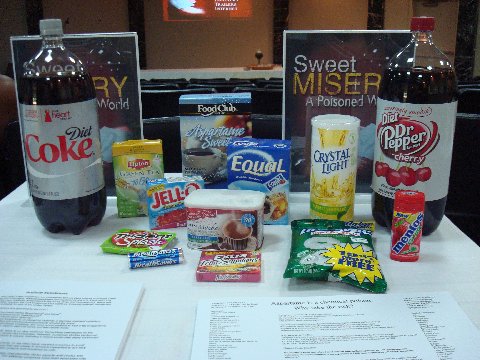
- Cereals
- Chewing Gum
- Flavored Syrups for Coffee
- Flavored Water Products
- Frozen Ice
- Frozen Ice Cream Novelties
- Fruit Spreads
- Gelatin, Sugar Free
- Hard Candies
- Ice cream Topping
- Ice Creams, No Sugar Added or Sugar Free
- Iced Tea, Powder
- Iced Tea, Ready to Drink
- Instant Cocoa Mix
- Jams & Jellies
- Juice Blends
- Juice Drinks
- Maple Syrups
- Meal Replacements
- Mousse
- No Sugar Added Pies
- Non-Carbonated Diet Soft drinks
- Nutritional Bars
- Powdered Soft Drinks
- Protein Nutritional Drinks
- Pudding
- Soft Candy Chews
- Sugar Free Chocolate Syrup
- Sugar Free Cookies
- Sugar Free Ketchup
- Table Top Sweeteners
- Vegetable Drinks
- Yogurt, Drinkable
- Yogurt, Fat Free
- Yogurt, Sugar Free
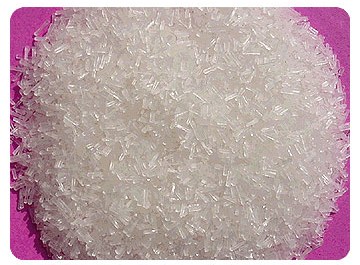
MSG is a drug and a neurotransmitter which stimulates the brain cell activity. MSG "tricks" the brain into thinking the food you are eating tastes good and you want more. Remember the advertising campaign for the chip company that used the slogan "I bet you can't eat just one". These were laced with MSG. The reaction of headaches, migraines, stomach upsets, diarrhea, irritable bowel syndrome, asthma, panic attacks, heart palpitations, mental confusion, mood swings, neurological disorder symptoms like Parkinson's, MS, ALS, Alzheimers and behavior disorders to name a few are not an allergic reaction, but a powerful drug reaction. This over stimulation of the brain cells actually kills the brain cells.
MSG was discovered (1908) by Kikunae Ikeda (Tokyo Imperial University) when he was trying to pin down the chemistry behind the flavor later termed “umami“, a Japanese word that is the “IT” word amongst name-dropping with-it foodies today. He isolated this flavor from seaweed broth and called it Monosodium Glutamate. With the help of the Ajinomoto Corp of Japan, Ikeda patented MSG in 1909 and it was made commercially available for the first time. Thus, MSG has been around and in commercial use for almost 100 years. MSG was desirable because it boosted the sensation of “savory” flavors in food, especially important if you are involved with vegetarian cuisines or if you are preparing low-protein content foods for mass marketing.
MSG is now so ubiquitous in our food chain (east and west) that you would be very hard pressed to go MSG-free. As you would expect, junk foods and instant foods like soups and other mixes contain MSG. Prepared food in your grocery stores and at fast food outlets (KFC chicken skin is massively loaded with MSG) and fine dining restaurants alike are awash in MSG. Red meats, poultry, and other off-site prepared meat products are either sprayed with MSG containing solutions (Sanova, a pesticide) or injected with MSG containing compounds (hams, turkey, chicken, etc).
Other names for MSG: Ajinomoto, Gelatin Calcium Caseinate, Monosodium glutamate, Hydrolyzed Vegetable Protein (HVP), Textured Protein, Monopotassium glutamate, Hydrolyzed Plant Protein (HPP), Yeast Extract, Glutamate, Autolyzed Plant Protein, Yeast food or nutrient Glutamic Acid, Sodium Caseinate Autolyzed Yeast, Vegetable Protein Extract, Senomyx (wheat extract labeled as artificial flavor).
MANUFACTURED VS. NATURAL GLUTAMIC ACID
There are a number of straightforward bold faced lies used by the glutamate industry in defending its contention that exposure to free glutamic acid found in processed food does not cause adverse reactions such as hives, asthma, seizures, and migraine headache; could not possibly cause brain damage, learning disorders, or endocrine disturbances; and could not possibly be relevant to diverse diseases of the central nervous system such as addiction, stroke, epilepsy, schizophrenia, anxiety, depression, and degenerative disorders such as ALS, Parkinson's disease, and Alzheimer's disease.
Central to their argument is the lie that the processed free glutamic acid used in processed food is identical to the glutamic acid found in unprocessed, unadulterated food and in the human body.
The truth of the matter is that the glutamic acid found in unprocessed, unadulterated food and in the human body is composed of one form of a single amino acid, L-glutamic acid, and nothing else. In contrast, the processed free glutamic acid used in processed food is always composed of two forms of glutamic acid (L-glutamic acid and D-glutamic acid) and a variety of other
chemicals commonly referred to as contaminants. In addition to the D-glutamic acid, contaminants may include, but are not limited to, pyroglutamic acid, mono and dichloro propanols, heterocyclic amines, and peptides. Mono and dichloro propanols and heterocyclic amines are carcinogenic. The consequences of the interactions of these various chemicals are unknown.
GLUTAMIC ACID: (also referred to as glutamate) is an amino acid found in all protein. Following ingestion of protein, and during the course of normal digestion, glutamic acid is released from ingested protein, becoming "free glutamic acid." If sufficient amounts of free glutamic acid are not available for normal body function, the body can create glutamic acid from other amino acids. Humans do not need to eat protein in order to supply the body with the glutamic acid that it needs.
Glutamic acid can also be freed from protein by fermentation, enzymolysis, use of acids, or other manufacturing processes, prior to ingestion.
REFERENCES
1. Bruce V. Bigelow, staff writer, San Diego Union-Tribune. October 4, 1995. (Source K. Barry Sharpless)
2. Rundlett, K.L. and Armstrong, D.W.. Evaluation of free D-glutamate in processed foods. Chirality. 1994;6:277-282.
3. Hunter, B.T. The Great Nutrition Robbery. New York, NY: Charles Scribner's Sons, 1978, page 35.
4. Cram, D.J. and Cram, J.M. Host-Guest Chemistry: Complexes between organic compounds simulate the substrate selectivity of enzymes. Science. 1974;183:803-809.
5. Federal Register. Vol 38, No. 143--Thursday, July 26, 1973, page 20037
6. Maga, J.A.. Flavor potentiators. Critical Rev. Food Sci. Nutr. 1983;18:231-312.
7. Life Sciences Research Office of the Federation of American Societies for Experimental Biology. Analysis of adverse reactions to monosodium glutamate (MSG). July, 1995. Prepared for the Center for Food Safety and Applied Nutrition, Food and Drug Administration. Page 9.
8. Konno, R. et al. Origin of D-alanine present in urine of mutant mice lacking D-amino-acid oxidase activity. American Journal of Physiology, 1993, 265:G699-703.
9. Man, E.H. and Bada, J.L. Dietary D-Amino Acids. Ann. Rev. Nutr. 1987;7:209-25.
10. Rundlett, K.L. and Armstrong, D.W. Evaluation of free D-glutamate in processed foods. Chirality. 1994;6:277-282.
11. Konno, R. et al. Origin of D-alanine present in urine of mutant mice lacking D-amino-acid oxidase activity. American Journal of Physiology, 1993, 265:G699-703.
12. Pommer, K. (Novo Nordisk BioChem Inc., Franklinton, NC) Cereal Foods World. October, 1995 Vol 40. No 10. Page 745.
13. Life Sciences Research Office of the Federation of American Societies for Experimental Biology. Analysis of adverse reactions to monosodium glutamate (MSG). July, 1995. Prepared for the Center for Food Safety and Applied Nutrition, Food and Drug Administration. Page 32.
14. Expert Report of Paul M. Kuznesof, Ph.D., Chief of the Chemistry Review Branch in the Division of Product Manufacture and Use, Office of Premarket Approval, Center for Food Safety and Applied Nutrition, FDA. The Report was submitted on September 3, 1996 to the Federal Court in the Eastern District of Missouri re: Truth in Labeling Campaign, et al., vs. Shalala et al., pages 1-3.
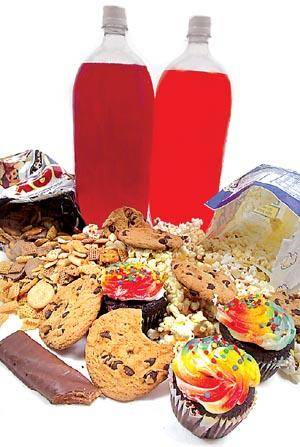
We surely live in an exciting time in history. If you are not careful, the poisons being put into your food will get you. If you manage to avoid them, the medicinal drugs you are prescribed will do you in. In the chemical age in which we live, the rule must be: Let the buyer beware.
Russell L. Blaylock, M.D., a neurosurgeon at the University of Mississippi Medical Center, has researched extensively into a little-known set of substances called excitotoxins. What you dont know can kill you, by inches if not faster.
MSG (monosodium glutamate), Aspartame (Nutrasweet, Equal), hydrolyzed vegetable protein, and cysteineare all examples of excitotoxin amino acids. They are added to human foods and drinks in order to enhance the flavor. But careful research on animals reveals that they destroy brain cells.
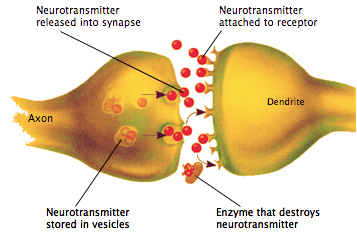
Working of Nerve Signals
Neurotransmitters are chemicals that act as messengers between cells in the brain and nervous system. When an impulse arrives at neuron, neurotransmitter molecules are released from its axon. The molecules diffuse across a short gap and bind with an empty receptor on the surface of another neuron, or on a muscle or gland. There are many different neurotransmitters and more than one kind might be used between an axon, gap, and receptor (together called a synapse). When metabolic processes are functioning normally, the concentration of neurotransmitter is quickly reduced and cellular 'housekeeping' takes place to keep everything healthy and in balance. Everything happens in milliseconds or less. Too much of a neurotransmitter makes it excitotoxic. The receptors over-activate. Ultimately the nerve cannot keep up and kills itself (apoptosis) or triggers a nearby cell to devour it (phagocytosis).
Excitotoxins chemicals are found naturally in very small amounts in plants. But, anxious to get you to buy more of their products, the food companies use man-made, highly concentrated forms of those chemicals. Fearful that their competitors will sell more food than they do, every (every) major food company uses them to heighten the flavor. The presence of those chemicals in the food causes you to want to eat more of the product than you normally would. Excitotoxins are especially added to foods that have a bland taste or little flavor.
But when the same amount of these chemicals, that you ingest in a bottle of Flavor Cola or a bowl of Nutty Crisps, is added to the rations of test animals (including mice, cats, and chimpanzees), it produces brain damage. The excitotoxins stimulate the neuron brain cells so vigorously, that the cells die of exhaustion! This effect is especially seen in the hypothalamus and temporal lobes which control behavior, emotions, onset of puberty, sleep cycle, hormones, immunity, and a number of other body functions. Short term memory and the ability to learn are also affected.
Several factors determine how much damage occurs at a given meal: the amount that is eaten and how frequently such foods are eaten. Some people eat such food every day or at certain times day after day. Some people drink no water, but derive all their fluids from soft drinks! Guess what is in those soft drinks? Hypoglycemia also makes the brain nerves very sensitive to these chemicals.
Dr. Blaylock recommends that those with a family history of neurodegenerative diseases should make every effort to avoid foods containing excitotoxins. These diseases include Alzheimers disease, Parkinsons disease, Huntingtons disease, and Amyotrophic Lateral Sclerosis (Lou Gehrigs disease). They markedly decrease the blood brain barrier, making a person more sensitive than normal to chronic exposure to these dangerous chemicals and consequent brain damage.
Now, let us consider some doctored foods in which these substances are found:
Beware of canned soup, fast foods, junk food, and food found in fast-food or Chinese restaurants. They will generally contain large amounts of MSG.
A meal of this so-called food can, in a child, raise the blood level of excitotoxins six timeswhich, in primates, destroys brain cells! A childs brain is four times more sensitive to damage by excitotoxins than an adults brain. But the brain damage will not be evident until the child is more mature. Is tasty junk food really worth the damage it is going to bring to you?
The following food additives contain 30% to 60% MSG: monosodium glutamate, hydrolyzed vegetable protein, hydrolyzed protein, hydrolyzed plant protein, plant protein extract, sodium caseinate, calcium caseinate, yeast extract, textured protein, autolyzed yeast, hydrolyzed oat flour, Accent.
The following food additives contain 12% to 40% MSG: malt extract, malt flavoring, bouillon, broth, stock, flavoring, natural flavoring, natural beef or chicken flavoring, seasoning, spices.
The following additives may contain MSG: Carrageenan, enzymes, soy protein concentrate, soy protein isolate, whey protein concentrate, some types of soy milk.

READ LABELS: Remember to read labels on the foods you buy. In the chemical age in which we live, the rule must be: Let the buyer beware. We hope you will come to realize that the "food is food" concept is out! Buy foods with the purest ingredients, free from refined sugars, free from hydrogenated oils, chemicals and preservatives. When you must use oil in your cooking, use only a high grade olive oil.
No comments:
Post a Comment